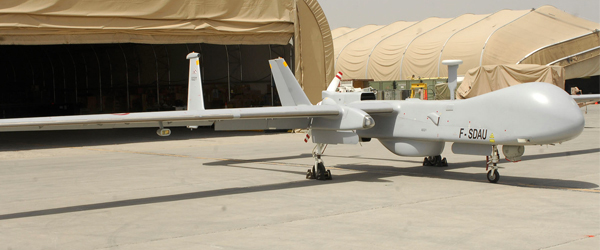The French Air Force’s Cassidian Harfang, based on the IAI Heron airframe, has logged over 4,000 flight hours since deploying to Bagram air base, near Kabul, well over two years ago.
Deployed since February 2009, the detachment at Bagram air base operates the interim MALE (medium altitude long endurance) unmanned aircraft dubbed Harfang. On May 26, 2011, the UAS completed its 400th mission over Afghanistan in support of the International Security and Assistance Force (ISAF), passing on this occasion the symbolic threshold of 4,000 flight hours.
Harfang is an unmanned and unarmed intelligence, surveillance and reconnaissance aircraft, remotely controlled by aircrew with a background in fighters, transports or as navigators. In Afghanistan, it flies daily assignments for the benefit of all French and foreign coalition forces.
Having an airborne vehicle with long endurance and low detectability, which can observe in real time and at ranges of several miles, by day or night, is a major asset for ground forces deployed in Afghanistan. Surveillance of villages and compounds, convoy escort, searching for improvised explosive devices, identifying and observing helicopter landing zones, direct support of troops in contact with the enemy, and more: its operational scope is very broad.
The Harfang detachment consists of about forty people, including thirteen mechanics and nine crew members, comprising aircrew, intelligence officers and image analysts. In addition, there are 18 support personnel for logistics, communications and administration.
With this vast array of missions, the Harfang interim experimental system has enabled the staff of the Air Force to acquire knowledge and technical and operational know-how of the highest order.

